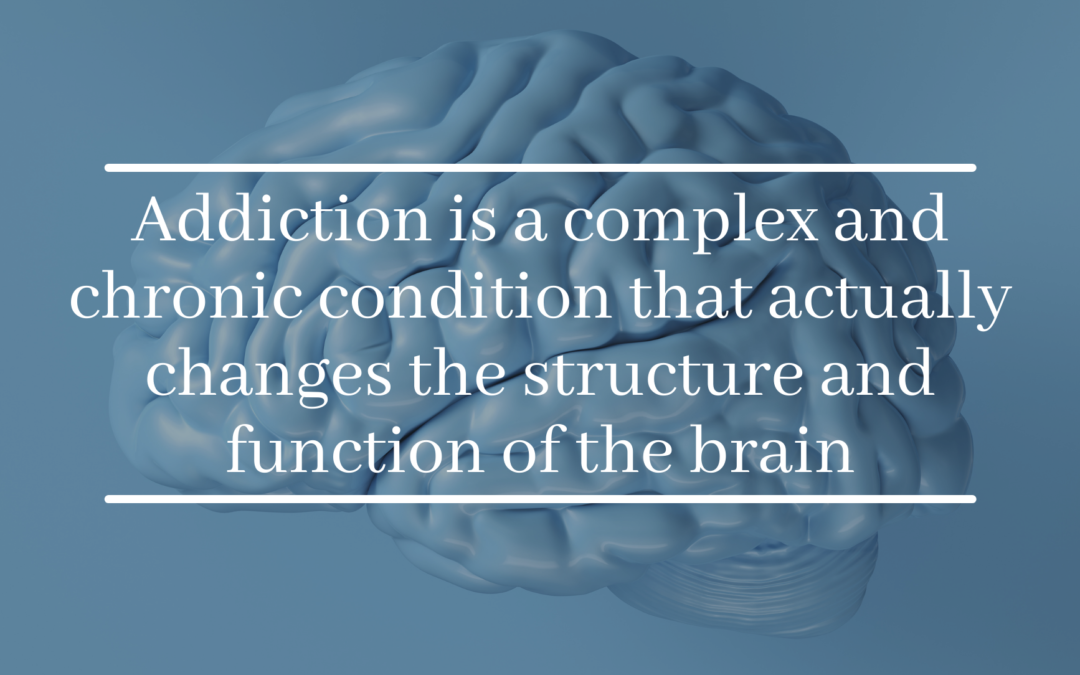Contrary to our growing understanding of addiction, the opinion that addiction is something that marks an individual as deserving of shame, ridicule, and punishment persists. Let’s be clear: addiction is not a moral failing. It is a complex and chronic condition that actually changes the structure and function of the brain.
Though our brain’s interpretation of pleasure plays a significant role in the development of addiction, it isn’t the only player on the field. The brain’s reward circuit involves memory and motivation in addition to pleasure, and the introduction of addictive substances and behaviors on this system stimulate it in the same way, and then proceed to overwhelm it.
Nucleus Accumbens
The Nucleus Accumbens, a cluster of nerve cells found in the basal forebrain, is most notably known for its starring role in the brain’s reward system. When we experience something pleasurable, neurons – dopamine chief among them – are released from the ventral tegmental area (VTA), and projected to the nucleus accumbens. In fact, dopamine release is so intrinsically tied to the nucleus accumbens, that this region of the brain has become known as the brain’s pleasure center.
Amygdala
The amygdala is a collection of cells at the base of the brain and is the integrative center for emotions, emotional behavior, and motivation. Dopamine signaling in the amygdala creates emotional associations with the activities and behaviors that caused the release of dopamine. This builds an expectation of reward which is a powerful influencer on emotional reactions and retained memories.
Hippocampus
The hippocampus, often coined as the brain’s learning and memory center, plays a critical role in the consolidation of information from short to long term memory. Since dopamine enhances reward-related memories, strengthening reward related synapses, it is easy to understand why these quick message pathways contribute to the development of addictions.
For a visual guide to the reward system, take a look at this video from the National Institute on Drug Abuse.
Pleasure
The key thing to remember is that the brain does not differentiate between the physical experience of pleasure regardless of the source. The brain releases dopamine, which is recognized by the structures involved in the rewards system and communicates the need to strengthen pathways to remember environmental cues in order to acquire the pleasure again. With the hippocampus cementing memories of the satisfying experience, and the amygdala creating conditioned responses to the given stimuli, the stage is set for the future acquisition of pleasure and reward.
This is precisely why addictive substances hit the brain the way they do – they create shortcuts to massive dopamine release. The initial experiences of pleasure are great, and the foundation is laid for the seeking of the continuation of pleasure. However, these massive overloads of dopamine release impair the brain’s natural release of the neurotransmitter. Studies have shown that consistent use of addictive substances severely limits an individual’s ability to feel pleasure over time.
Tolerance
The massive dopamine release of addictive substances out paces natural reward dopamine levels at a rate of two to ten times. Not to mention, the dopamine levels are released far faster with addictive substances versus the brain’s natural production and activation. The brain’s intrinsic response to the overwhelming level of stimulus is to produce less dopamine or eliminate the receptors that pick it up. This means that the more one uses addictive substances, the less effective they become at affecting the brain in the same way. As dopamine has less and less effect on the brain’s pleasure center, the addicted individual feels less actual pleasure from the substance.
Compulsion
When the pleasure provided by an addictive substance subsides, it does nothing to touch the memory of it. The need to recreate this feeling remains. With the hippocampus and amygdala storing the details about environmental cues, addiction sufferers continually confront instances of cue recognition that may lead to relapse. Like a person who has quit smoking, who smells it on someone else, or sees a cigarette in the hand of another, their ability to abstain is challenged when confronted by the environmental cues that surround them with remembered promise. The systems in the brain seek out the environmental conditions to recreate remembered instances of pleasure.
Public opinion and responses to addiction have a regrettable history of punitive approaches, but shame and punishment are not the answer to addiction recovery. An individual is not capable of affecting their brain chemistry through a desire for change or through the use of unsavory penalties. It takes support and connection to work towards sustainable recovery. Learn about the impact of sober living houses on addiction recovery here.
To find out more about what Recovery Community Development is doing to help individuals in their community heal, connect, and recover, take a look at RCD’s mission and vision.
Want to help RCD with their mission? Donate today.

